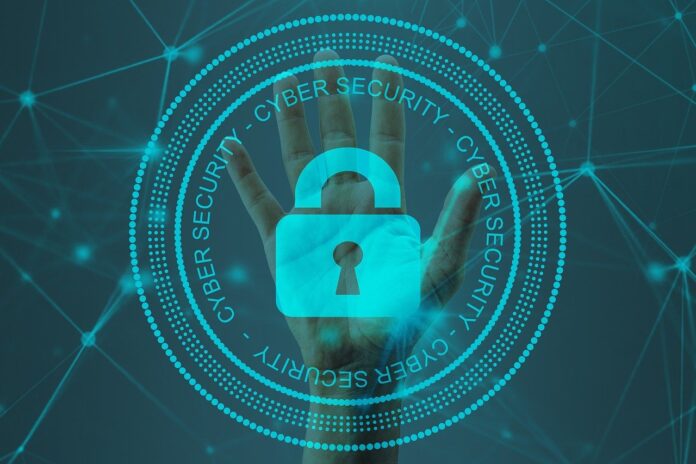No wonder internet has become an open zone for everyone. In addition to providing convenience to people, it has given birth to millions of hackers and cybercriminals. They break into the company’s IP addresses with the sole purpose of stealing confidential data. They compromise the systems, and security experts find a new way to protect information. Precisely, this is why modern cybersecurity is at a constant cycle of data breaches and identity thefts.
As anything connected to the internet isn’t safe from hackers, many entrepreneurs consider switching to manual records again. However, the question remains will that be equally productive? It is impossible to escape the benefits of tech; hence, it would be wise to find a way to make things work. It means entrepreneurs have to think beyond firewalls and anti-virus software. They have to hire high-end cybersecurity personnel who are up to date with the latest security protocols.
Similarly, companies have to keep upgrading their information technology (IT) infrastructure. After all, old systems are more vulnerable to cyberattacks and data breaches. While many people continue to think advanced security systems are impenetrable, let us help you find the facts. Here are six ways how companies can improve cybersecurity measures.
1. Cover the Basics
Usually, cyberattacks occur because the cybersecurity’s foundation is lagging. Perhaps, you might have set weak passwords on the system. Likewise, you may be working with a staff that isn’t well-acquainted with cybersecurity measures. Therefore, ensure you have a team of experts on board before implementing any security measures.
First, you must hire a security administrator to create policies and procedures to identify weak network areas. Second, you have to look for a digital forensics analyst since these experts investigate cybercrimes. They reconstruct information systems to understand data breaches and fix glitches. Similarly, you have to hire a cryptographer, penetration tester, software developer, and other specialists needed to run IT operations smoothly.
2. Identify Vulnerabilities
Once you have high-tech security experts on board, the next step is to identify the existing vulnerabilities in the system. For that, you can conduct a risk assessment on the cybersecurity program. It will unfold the circumstances under which the organization can be at threat. For instance, an employee accessing company files through a personal computer might put the system at risk. In turn, the company can restrict file access beforehand to avoid problems later.
Likewise, the risk assessment will identify vulnerabilities arising from external sources. Sometimes, the organizations have a weak data storage system. The risk assessment will identify vulnerabilities in cloud servers, encouraging you to get rid of old files full of malware and viruses. These practices will defend the systems against more likely attacks, creating a robust IT infrastructure.
3. Use Multi-Factor Authentication
Believe it or not, modern-day hackers can guess passwords within a few seconds. Hence, companies have to think beyond passwords to secure their systems. Here, multi-factor authentication can be an incredible choice. It means users will only be able to access the software after personal verification. That could be as straightforward as entering a memorable word, childhood friend’s name, or birthplace. Likewise, the system can also generate a one-time password to give login access.
Besides this, many organizations are using biometric authentication when it comes to confidential information. As a result, employees have to scan their fingerprints or iris before accessing any information. Even though these measures are a bit costly, they offer the most high-end security. After all, hackers and cybercriminals can never forge biometric traits.
4. Vet & Educate New Employees
Truthfully, background checks should be an essential element of recruitment. Whether you are hiring employees urgently or not, you must carry out background checks to look for previous criminal records. Sometimes, hackers place an insider in the organization who gives access to the system. Thus, ensure that’s not the case in your company.
Moreover, educate employees on cybersecurity protocols. Explain to them how they have to avoid pop-ups and unknown emails regardless of how lucrative they seem. These are potential phishing scams that enable hackers to break into the systems. Similarly, tell employees how to use secured data servers without breaching the protocols. Some training regarding security measures can go a long way in ensuring the company’s security.
5. Implement VPN for All Connections
Most companies have their IP address, but it’s still not safe enough. The entire company’s data is running on a single address, increasing the risk of exposure. To mitigate this, you can implement Virtual Private Network (VPN) for all the connections between office locations. Employees would be turning on the VPN before accessing any file that would give an additional layer of protection.
Similarly, managers accessing data through mobile phones would also get a secure connection, protecting their passwords. Alongside having high security, VPNs have low setup and maintenance costs, making it easy to streamline security protocols.
6. Review Policies & Procedures
As policies and procedures outline the organization’s principles, it is crucial to keep reviewing them. The tech world is fast-paced; meaning, you have to be extra vigilant with security-related policies. Therefore, go through cybersecurity protocols every month. You have to check the rules related to remote access, password creation, management, and user privilege. Many passwords get leaked in data breaches, making the company’s system vulnerable.
By regularly checking the policies, you can implement changes and introduce new measures to strengthen the security protocols. In addition, you can oversee the configuration procedures to ensure employees are following the necessary protocols. In case of glitches or loading errors in the configuration, immediately seek help from the experts to avoid any cyber risks.
Final Thoughts
Undeniably, cybersecurity is becoming a matter of concern for businesses. While many entrepreneurs are skeptical about its reliability, others are unable to prevent data breaches. As technology is evolving, developers are inventing robust cybersecurity protocols. Thus, companies must take an optimistic approach and invest their resources in cybersecurity. In addition to preventing the threat of cyberattacks, it will strengthen the IT infrastructure.





